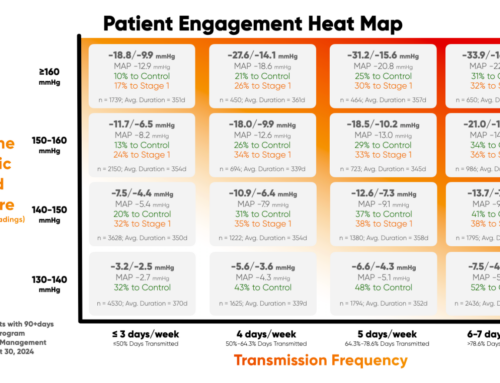Technological advances are continuously reshaping industries all over the world, and healthcare is no exception, as care providers discover new opportunities in the ever-changing landscape. RPM (Remote Patient Monitoring) is one such opportunity that can improve patient outcomes and open up new streams of revenue for you as a healthcare provider.
With several tangible benefits of remote monitoring to deliver healthcare, you must consider how to start an RPM program at your practice. Starting and fully implementing an RPM program at your organization can help improve clinical outcomes, lower costs, and provide financial stability in these uncertain times.
Step-by-Step Guide on How to Start an RPM Program
Here are some tips on how to start an RPM program, how to choose a suitable platform for your patient population, and how to scale it for your healthcare entity:
Recognize Your Requirement
The first handy tip is to identify a particular need that you will be fulfilling with your RPM program. It can be a high hospital readmission issue you are currently facing, chronic condition, or the need to open up new streams of revenue in the future.
Set Up a Team
Engage and form a team of physicians, care staff, and technicians, to ensure the successful implementation of your RPM program. The size of this team, of course, is dependent upon the size of your organization and target patient population. Full service RPM solutions can also assist with care team development.
Set Goals for Multiple Objectives
- Patient Health Outcomes
Before you set goals for patient outcomes, you may need to identify the category of patients, the number of patients, and the specific health outcomes you are aiming for, with your RPM program.
- Patient Experience
Improvement in patient experience includes setting goals to improve patient engagement rates, patient satisfaction, patient compliance, and patient-to-care team ratio, among others.
- Fiscal Growth
As a healthcare provider, set goals to open up additional revenue streams and look for ways to lower costs with your new RPM program.
- Job Satisfaction
Set goals for provider satisfaction with your RPM program, including the reduction in the allocation of staff time and lower staff turnover rate, to ensure that your staff and care managers job is easier and with less friction.
Decide Whether to Buy or Lease RPM Devices
The decision on whether to buy or lease the remote monitoring devices should depend on factors like the size of your enterprise, your goals, and your budget. While leasing RPM devices involves a lower cost up front and allows for the flexibility that leasing brings; buying the devices would mean lower overall costs and averting long-term leasing contracts.
Identify Patients For Your RPM Program
There are three main ways that you can start in identifying eligible patients for your program:
- In-Person
Introduce the program to prospective patients during their office visits, to ensure the best rate of recruitment.
- Outreach Campaign
This involves sending letters explaining the merits and benefits of the program to a list of eligible patients.
- Phone Call
You can also call the eligible patients to explain the program and invite them to join it.
Deliver and Engage
Once you are ready to launch your RPM program, you must aim to compare baseline metrics at regular intervals to determine its progress and identify its shortcomings.
How Can HealthSnap’s Virtual Care Platform Help You Implement Your RPM Program?
If you are ready to start an RPM program, HealthSnap can provide the expertise to deploy a program precisely tailored to suit your specific needs and expectations. To learn more about our all-in-one integrated Virtual Care Platform call today at 888-780-1872 or click here to schedule a consultation.











